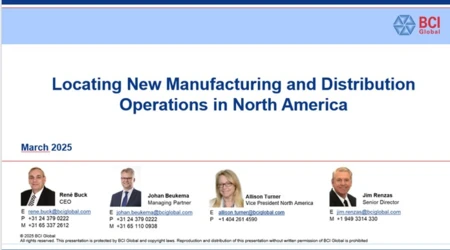International Business Strategy
Expanding into new international markets requires a clear integrated strategy. Apart from the commercial strategy, also your location and organization, manufacturing, distribution, partner strategies need to be incorporated.
International business strategies are required from start-up and scale up companies that are planning their commercial launch in new territories as well as for larger companies that are launching new products or new business models internationally. The BCI team of experts has the experience to support companies in the development of their international business strategies and detailing those out into practical roadmaps. We execute these projects in e.g. the life sciences industry but also in high tech, innovative food and other industry segments.
Launching a new product, whether you are a start-up or a large established company, must be done successfully at once in order to stay ahead of competition, to build trust in the market and to capitalize the market potential.
Key ingredients for a successful international business strategy are:
- An integrated strategy in which the business/commercial strategy comes together with the right manufacturing and distribution strategy, regulatory, quality and IT set-ups, and the optimal organization from a location(s) and staffing perspective
- A clear and accepted execution plan – a practical roadmap guiding the company through the implementation of the strategy
- Mobilizing the right internal and external knowledge and experience at the right time


Typical step-by-step approach
Our typical step-by-step approach has the following building blocks:
1 Strategy development
The strategy development phase includes information gathering, interviews with a range of stakeholders from different functions within the company, and one or more strategy workshops with a multifunctional team of the client company.
The aim of this phase is to define the overall strategy including e.g. launch date, market channel strategy, volume/sales projections, etc. This phase can also include benchmarking of how other similar companies have expanded and organized themselves internationally.
2 Organization development
In this phase it is per functional area defined what the required organization in the international market(s) is. This ranges from staffing projections (in cooperation with HR), location footprint scenarios (e.g. one central office or decentralized offices) and a detailing of what the requirements are from a regulatory, quality, IT/systems, etc. perspective.
3 Manufacturing and distribution strategy
Following from the overall business strategy it is being analyzed and determined what the optimal strategy for the company is in terms of manufacturing and distribution. This includes answering questions such as: should we manufacture in the international market(s) and should we do that ourselves or with specialized contract manufacturers? What is the optimal distribution model? What are 3PLs that can support us?
This phase typically includes scenario analysis from a supply chain cost perspective as well as qualitative and risk assessments.
4 Location selection
Following the organization, manufacturing and distribution strategy, BCI applies its location and site selection methodology to compare different candidate locations from a Cost, Quality of the Business Environment and Risk perspective. These analysis are done for (regional) headquarters, manufacturing sites, distribution centers, etc.
5 Roadmap development
In this final phase the different sub-strategies are integrated into an implementation roadmap. The roadmap includes both high level milestone planning per functional area as well as detailed roadmaps per functional area which can function as a guide during the implementation phase.

04 December 2024

06 October 2025

06 October 2025

10 September 2025

25 June 2025

